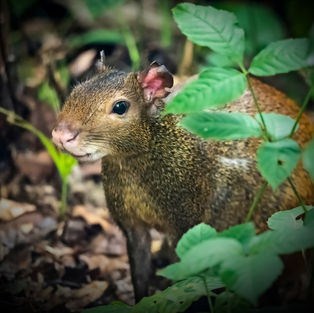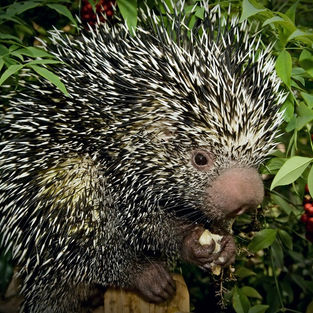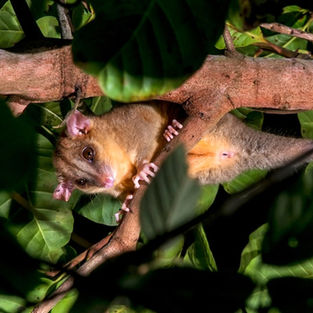Mammals of Manuel Antonio
Manuel Antonio National Park, situated on Costa Rica’s central Pacific coast, is one of the country's most biologically diverse protected areas despite its compact terrestrial size of approximately 19.83 km². The park's tropical rainforest, mangroves, and coastal habitats support a rich assemblage of mammalian fauna, making it an important site for the study of Neotropical mammals.
To date, more than 100 mammal species have been recorded within the park and its surrounding buffer zones. These include representatives from multiple orders such as Primates, Carnivora, Chiroptera, Rodentia, and Pilosa, among others.
Among the most conspicuous and ecologically significant mammals are the non-human primates, including three species:
-
White-faced capuchin monkey (Cebus imitator), known for its intelligence and social complexity.
-
Mantled howler monkey (Alouatta palliata), a folivorous species recognized for its loud vocalizations used for territorial communication.
-
Central American squirrel monkey (Saimiri oerstedii), an endemic and vulnerable species whose range is restricted to the southern Pacific lowlands of Costa Rica and western Panama.
These primates play key roles in seed dispersal and forest regeneration, highlighting their ecological importance.
Carnivores found in Manuel Antonio include the elusive Ocelot (Leopardus pardalis) and the White-nosed coati (Nasua narica), both of which are primarily nocturnal and omnivorous. The Northern raccoon (Procyon lotor) and Kinkajou (Potos flavus) are also present and commonly observed in riparian and secondary forest zones.
Bats (Order Chiroptera) represent the most species-rich mammalian group in the park, contributing to pollination, seed dispersal, and insect population control. Over 40 bat species have been documented, ranging from insectivorous to frugivorous and nectarivorous types.
Sloths, both the Brown-throated three-toed sloth (Bradypus variegatus) and Hoffmann’s two-toed sloth (Choloepus hoffmanni), are commonly seen in the park’s canopy. Their slow metabolism and unique fur-hosted ecosystems (home to algae and arthropods) make them subjects of ecological and microbiological interest.
The park's terrestrial rodents, such as the Agouti (Dasyprocta punctata) and the Spiny rat (Proechimys semispinosus), contribute to forest dynamics through seed predation and dispersal.
Although large predators such as jaguars (Panthera onca) are not currently resident due to habitat fragmentation, the presence of medium-sized carnivores and mesopredators suggests a relatively intact food web within the park boundaries.
Manuel Antonio’s mammal populations are under pressure from increasing tourism, habitat encroachment, and climate change. Ongoing conservation measures, including strict park management, wildlife corridors, and public education, are essential to maintain the ecological balance. Long-term mammal monitoring projects using camera traps and acoustic surveys have provided valuable data for understanding population trends and human-wildlife interactions in the region.
Most Common Mammals of Manuel Antonio, Costa Rica
_edited.jpg)




















